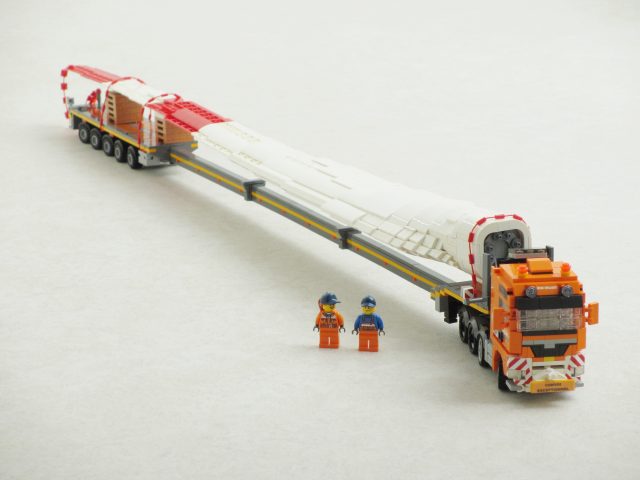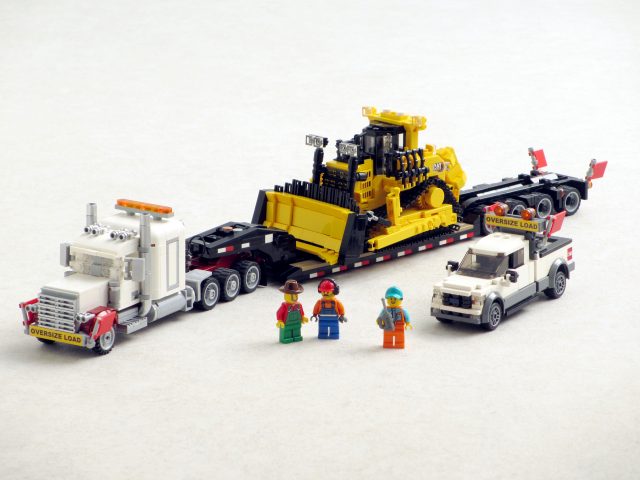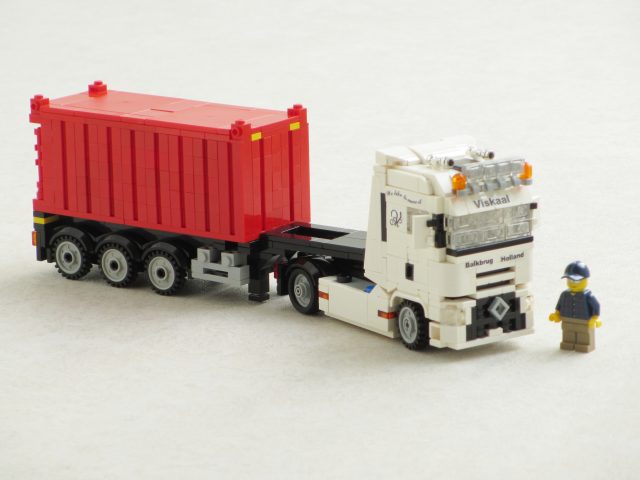When I built my Lego mega windmill trailer, for carrying a wind turbine nacelle, I did not think this would be the start of a trilogy. However, I subsequently built a truck that carries a rotor hub. At that point, it was pretty much inevitable that I would also build a vehicle carrying one of the blades.
I put this off for more than two years, though, because I did not relish building the blade. The nacelle represents a Vestas V90 wind turbine. By now, this is something of an old clunker, and it is quite small compared to more modern turbines. Nonetheless, its blades are still 44 m long. This makes them 128 studs long at the scale of my other vehicles (1/43). And I happen to like building small details. This is one reason why I enjoy building minifigure-scale trucks so much. By comparison, the blade’s size and its complicated shape would make building it pretty tedious. And it was tedious, indeed. However, the finale to my wind turbine trilogy is one of the most beautiful shapes I have ever built.
Read more about building the wind turbine blade and its trailer














